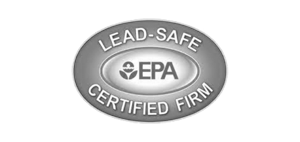Ever wondered how to tell if water stains are just minor or if they’re serious damage? Knowing the difference can save you a lot of money and keep you safe. Water damage assessment helps spot the signs of serious damage early on.
Key Takeaways
- Signs of serious water damage include sagging ceilings, cracked or peeling paint, musty odors, and softened drywall.
- Water damage on flooring can manifest as buckling, warping, discoloration, and musty smells.
- Different types of water damage are categorized as clean (Category 1), gray (Category 2), and black (Category 3) water.
- Prompt water damage identification and assessment can prevent further structural harm and health hazards.
Recognizing Water Damage Severity
It’s crucial to spot water damage early to avoid bigger problems. Look closely at the affected area for signs like mold, especially in corners and where walls meet ceilings. Also, watch for discolorations and water rings.
Structural changes, like cupping floors or warping walls, are big warning signs. Peeling paint and water stains, along with a musty smell, also point to water damage. These signs help figure out how deep the damage is and what to do next.
Standing water for over 48 hours can lead to mold growth, affecting about 50% of homes with water damage. Different materials handle water differently. Knowing how long water was present, how much, and what it touched is key to understanding the damage.
Professional help can cut down the cost of fixing water damage by up to 40%. This shows why quick action and expert advice are vital. They help keep your property safe and its value high.
Steps for Accurate Water Damage Assessment
It’s important to assess water damage correctly to avoid bigger problems and expensive fixes. Start by finding and stopping the water source to stop more damage. When checking for water damage, it helps to know the type of water involved. This includes Clean Water (Category 1), Grey Water (Category 2), and Black Water (Category 3).
Then, check all areas that might be affected, even hidden spots where water could have gotten in. Look for signs like warped floors, mold, and peeling paint. Musty smells can also mean there’s moisture that needs to be fixed.
When checking, watch for signs of water damage to the building itself. This includes sagging floors, cracks, and color changes on walls and ceilings. Doors and windows that are hard to open or close might also show structural problems.
- Turn off the water source right away to stop more damage.
- Get rid of standing water quickly to avoid serious structural damage.
- Use dehumidifiers and fans to dry out wet areas.
- Move your belongings to a dry place to protect them.
If the water damage is big, getting help from experts like Distinctive Restoration is a good idea. They can do a detailed check and fix the damage. They know how to handle water damage and fix it right.
Regular checks by property managers can help stop water damage, especially in rental places. Remember, water damage can lower a property’s value by 10-20%. So, it’s crucial to check and fix water damage quickly.
How to know if water damage is serious?
Figuring out if water damage is serious involves looking, touching, and smelling. Signs like stains, warping, and color changes on walls, ceilings, and floors are key. Soft or spongy walls mean a lot of water has gotten in, which can hurt the structure.
Visual aspects include:
- Stains on walls and ceilings indicating a potential leak
- Peeling or flaking paint showing signs of hidden moisture
- Swollen drywall suggesting substantial water absorption
- Warped walls resulting from sheetrock water absorption
Mold behind walls or under flooring is a big deal because of health risks. It grows in damp places, causing breathing problems and infections. A musty smell means there’s hidden water damage that needs fixing fast.
Assessment of water damage risk also includes:
- Monitoring water usage for unexplained increases in utility bills
- Investigating for any hidden leaks behind sinks and appliances
Checking how bad water damage is also means looking at contamination levels. Category 3, or black water, is the worst because it has chemicals and germs.
Regular checks on your property and watching the weather can help spot water damage early. Fixing problems quickly can save you from bigger repairs and money losses.
Conclusion
Understanding water damage requires knowing several key factors. These include the type of water, visible signs like discoloration or mold, and structural assessments. Spotting early signs, such as odd smells, visible mold, or sudden water bill increases, is crucial. It helps in taking action quickly and preventing more damage.
Water damage can come from floods, leaks, or plumbing problems, each with its own level of severity. Keeping appliances in good shape, catching problems early, and getting professional help are essential. Water damage restoration is a complex process. When done right, it can greatly reduce risks and costs.



















